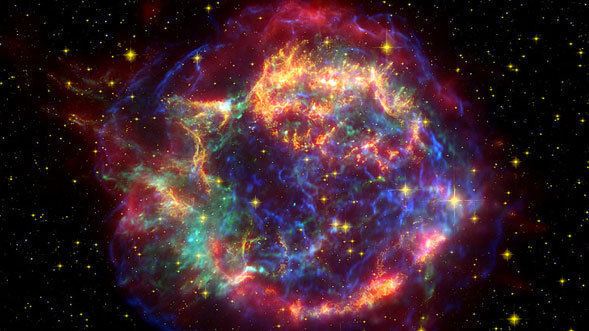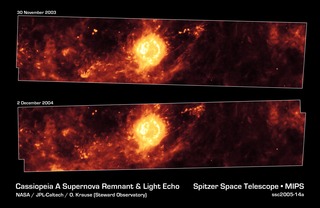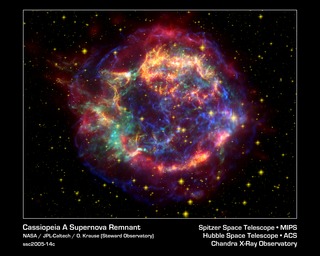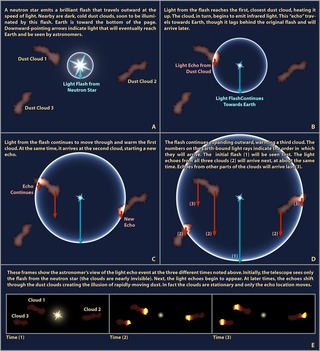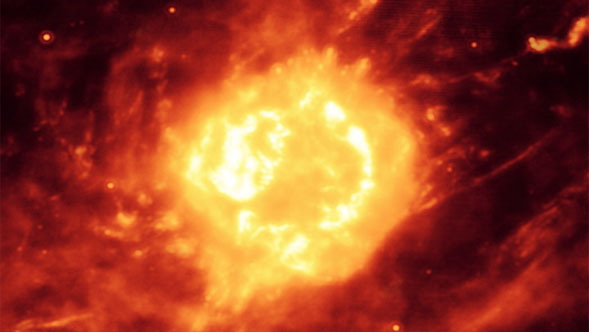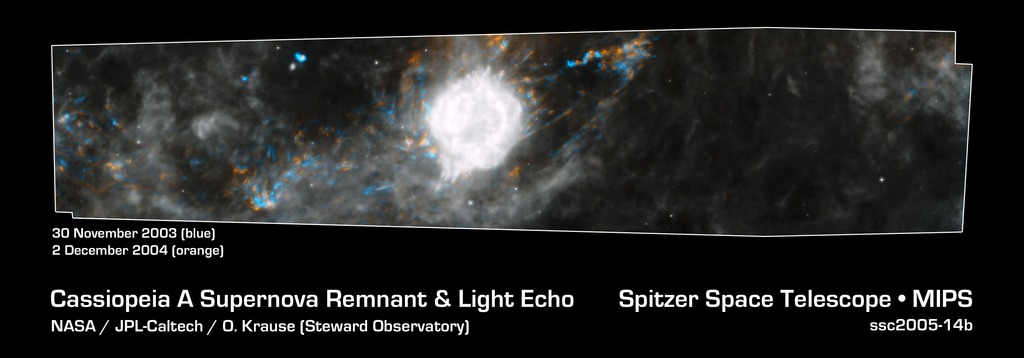
Credit: NASA/JPL-Caltech/O. Krause (Steward Observatory)
Observation • June 9th, 2005 • ssc2005-14b
ssc2005-14b
This Spitzer Space Telescope composite shows the supernova remnant Cassiopeia A (white ball) and surrounding clouds of dust (gray, orange and blue). It consists of two processed images taken one year apart. Dust features that have not changed over time appear gray, while those that have changed are colored blue or orange. Blue represents an earlier time and orange, a later time.
These observations illustrate that a blast of light from Cassiopeia A is waltzing outward through the dusty skies. This dance, called an "infrared echo," began when the remnant erupted about 50 years ago.
Cassiopeia A is the remnant of a once massive star that died in a violent supernova explosion 325 years ago. It consists of a dead star, called a neutron star, and a surrounding shell of material that was blasted off as the star died. This remnant is located 10,000 light-years away in the northern constellation Cassiopeia.
An infrared echo is created when a star explodes or erupts, flashing light into surrounding clumps of dust. As the light zips through the dust clumps, it heats them up, causing them to glow successively in infrared, like a chain of Christmas bulbs lighting up one by one. The result is an optical illusion, in which the dust appears to be flying outward at the speed of light. This apparent motion can be seen here by the shift in colored dust clumps.
Echoes are distinct from supernova shockwaves, which are made up material that is swept up and hurled outward by exploding stars.
This infrared echo is the largest ever seen, stretching more than 50 light-years away from Cassiopeia A. If viewed from Earth, the entire movie frame would take up the same amount of space as two full moons.
Hints of an older infrared echo from Cassiopeia A's supernova explosion hundreds of years ago can also be seen.
The earlier Spitzer image was taken on November 30, 2003, and the later, on December 2, 2004.
About the Object
- Name
- Cassiopeia A • Cas A
- Type
- Nebula > Type > Supernova Remnant
- Nebula > Appearance > Reflection > Light Echo
- Distance
- 11,000 Light Years
Color Mapping
| Band | Wavelength | Telescope |
| Infrared | 24.0 µm | Spitzer MIPS |
| Infrared | 24.0 µm | Spitzer MIPS |
Astrometrics
- Position (J2000)
- RA =23h 23m 29.7s
- Dec = 58° 46' 43.8"
- Field of View
- 0.0 x 0.0 arcminutes
- Orientation
- North is 86.0° left of vertical
